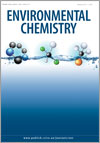EN11140The fate of mercury in Arctic terrestrial and aquatic ecosystems, a review
Environmental context. Mercury, in its methylated form, is a neurotoxin that biomagnifies in marine and terrestrial foodwebs leading to elevated levels in fish and fish-eating mammals worldwide, including at numerous Arctic locations. Elevated mercury concentrations in Arctic country foods present a significant exposure risk to Arctic people. We present a detailed review of the fate of mercury in Arctic terrestrial and marine ecosystems, taking into account the extreme seasonality of Arctic ecosystems and the unique processes associated with sea ice and Arctic hydrology.
EN11140 Abstract | EN11140 Full Text | EN11140PDF (2.6 MB) Open Access Article




